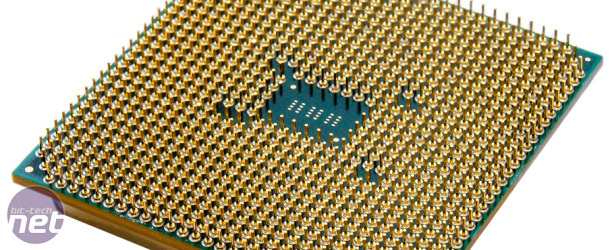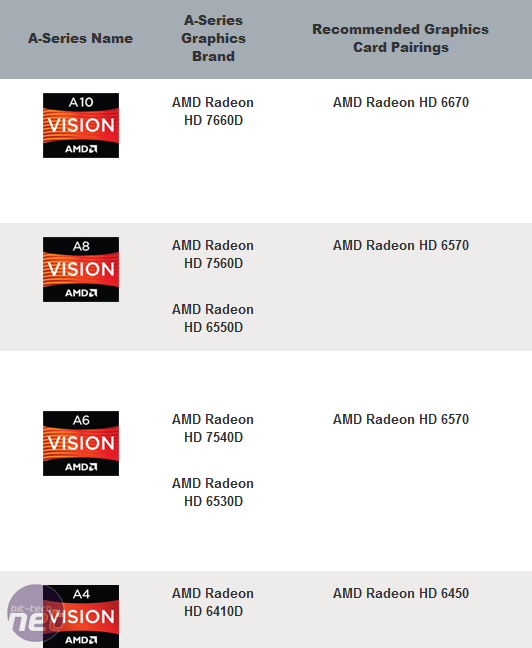Intel Haswell vs AMD Richland - the GPU test
July 2, 2013 | 10:01
Companies: #haswell #intel-and-amd

Haswell and Richland GPU testing
GPGPU support - the process of applying the parallel processing power of graphics cards/chips to everyday processing tasks - has exploded in the last year or so. Only a couple of years ago there were just a handful of programs that supported it and they were all pretty niche. Now, the likes of Photoshop (and several other Adobe applications), Internet Explorer and Autodesk all support it and there's even an open programming standard for it in OpenCL.It's this ballooning support that AMD has argued (and argues even more strongly now) gives its combined CPU/GPUs (APUs) a real world advantage over Intel's latest offerings, despite the fact that Intel still has a very clear advantage in raw CPU performance. However, Intel has also given its latest Haswell APUs a fairly hefty boost in graphics performance, potentially levelling the playing field somewhat.
It's in the context of this that today we're going to compare AMD and Intel's latest chips to see just how they stack up as a whole APU, rather than just looking at CPU performance.
Click to enlarge
Today we’ll be dealing with the two companies' latest flagship APUs, the Intel Core i7 4770K and AMD A10-6800K (AMD Richland), however, we won't just be pitching them head-to-head. The comparison between Haswell's GPU and the HD 8670D that's under the hood of the AMD A10-6800K is an interesting one, but - and this is AMD's other key selling point - the price difference between the CPUs is so huge that it's not a case that you'd ever choose between them. Also, the Intel Core i7-4770K is so powerful you'd almost never consider running it without a dedicated graphics card - the whole APU argument is one of balance and the Core i7-4770K doesn't offer this.
So, in the absence of Pentium or Core i3 versions of Haswell at the moment, what we'll be looking at is the academic difference between the best APUs the two companies have to offer, then assessing whether all AMD's rhetoric about the importance of a powerful GPU on a low-cost APU holds up in the real world.
To this end we're also going to test the performance of the AMD chip when coupled with a discrete AMD GPU, which enables a Crossfire-like Dual Graphics setup. It's certainly a reasonably compelling message on the surface - buy a low-cost APU and a budget graphics card and create a surprisingly powerful system - but does it really work out that way in practice? This is an ability unique to AMD, as Intel doesn't offer a discrete GPU to couple with Haswell and Nvidia doesn't make a CPU/APU to couple with its discrete graphics cards.
| Name | CPU Frequency | GPU Frequency | GPU/ Core Name | TDP | Memory | Production Process | Price |
| Intel Core i7 4770K | 3.5GHz | 1,250MHz | Intel HD 4600 | 84W | System | 22nm | £270 |
| Intel Core i7 3570K | 3.4GHz | 650MHz | Intel HD 4000 | 77W | System | 22nm | £160 |
| AMD A10-6800K | 4.1GHz | 844MHz | Radeon HD 8670D | 100W | System | 32nm | £115 |
| AMD Radeon HD 6670 | N/A | 800MHz | Turks | 66W | 1GB | 40nm | £40 |
Intel Core i7-4770K
Before we get onto the testing, let's just recap on the overall CPU/APU situation. Looking briefly again at the Intel side of the equation, as noted in our Haswell review, Intel has made some significant improvements to the GPUs that are touted by its new line of Core i5 and Core i7 CPUs. They are equipped with Intel HD 4600 graphics, which offer a 25 per cent boost in the number of execution units over Ivy Bridge (from 16 to 20) and a GPU core speed hike of 100-200MHz depending on the class of chip (1150MHz on the 3770K, 1250MHZ on the 4770K). The GPU clock can also drop much lower (600MHz on the 3770K, 350MHZ on the 4770K), resulting in improved power saving.
Intel has also created the 'R' edition CPUs (Core i7-4770R etc), which use an even more powerful graphics solution with a 1,300MHz GPU and on-chip eDRAM. However, these only come in a BGA package so will be of very limited use for home builds, and they're not available until Q3.
The crux is that Intel has a significant amount of ground to cover to offer APUs that can cope with a modicum of HD gaming or compete with AMDs APUs. We'll see shortly whether they succeed.
AMD A10-6800K and Dual Graphics/CrossFire
As for AMD, as we saw in our review of its Richland APUs, the CPU side of things has made some tidy gains both in the gaming and 2D arenas, closing the gap to Intel's budget CPUs. However, Intel's current Core i3-3220, which is based on the Ivy Bridge architecture, is still noticeably faster in many of our tests, even once we overclock the AMD APU, and we expect Haswell-based desktop Core i3's to increase this gap.
If you're not into games then, the case for AMD hangs solely on the argument that most modern day CPUs are fast enough in most CPU-bound tasks and that it's in GPU accelerated heavyweight tasks such as video encoding, image manipulation and even web browsing that the real world difference will be felt.
AMD's argument also has the trump card of Dual-Graphics. This allows you to combine a discrete Radeon graphics card with the A10-6800K's GPU to boost performance. It's similar to CrossFire, and depending on which driver version you're using will also appear in Catalyst Control Centre as CrossFire too.
Now there are one or two caveats here. Sadly, you can't drop any GPU you like into your system and expect it to work. As the table below shows, the best you can hope to achieve is a pairing between the A10-6800 and a Radeon HD6670 (a £45 card). So if you'd been thinking you could get one of AMD's APUs now and maybe save for a decent discrete graphics card such an HD7770 1GB, sorry folks, it's not going to happen.
Click to enlarge
So that's the scene set, now let's get down to testing...

MSI MPG Velox 100R Chassis Review
October 14 2021 | 15:04










Want to comment? Please log in.